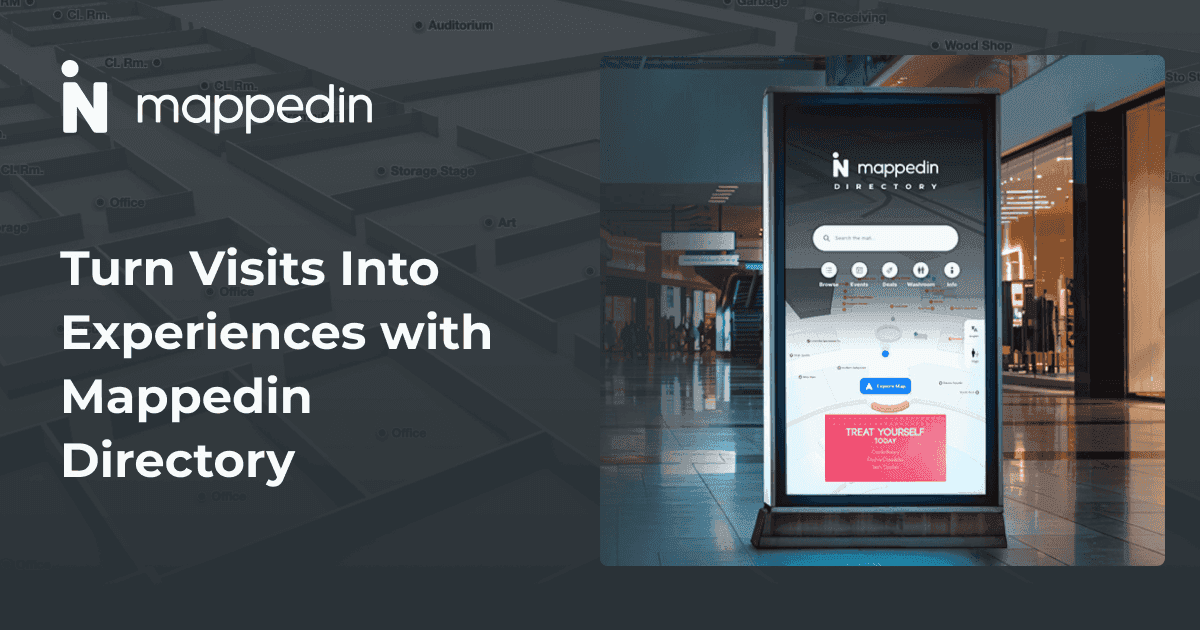Empowering next-generation airports
Airport managers play a central role in ensuring the seamless journey of millions of passengers each year. Their responsibilities encompass everything from simplifying the travel process to optimizing operations, enhancing safety, and boosting revenue. For all but the most frequent travelers, navigating inside airports can be a daunting task, and it's reassuring to know that airport managers are constantly striving to make the journey more enjoyable.
Outdoor navigation apps, such as Google Maps and Apple Maps, struggle to offer precise indoor guidance, with the challenges of adapting to frequent changes in layout and occupants, along with unreliable location signals being significant obstacles. As a result, airports are increasingly adopting indoor mapping technology to equip passengers with accurate location information, gate details, and directions within the airport, without requiring them to download another app.

Unlock airport efficiency with indoor maps
When properly designed, indoor maps provide an easy-to-understand overview of the airport layout, highlighting important locations, services, and amenities. These maps serve as detailed guides for both airport staff and travelers, simplifying the process of finding gates, restaurants, restrooms, retail options, and everything necessary for a smooth and enjoyable airport experience.
Indoor maps, built with thoughtfully designed tools, enable airport management to effortlessly customize, edit, tailor, and maintain the map to meet specific needs. This includes the ability to configure the map to emphasize key areas such as security checkpoints, passenger services, and retail hubs. The result is one map that can be integrated into various solutions, such as an airport website, airline app, and rideshare service. An up-to-date and dynamic visual representation, aligned with international color and iconography standards, significantly enhances discoverability throughout the airport, ensuring that the displayed information remains consistently accurate and traveler-friendly.

Guide passengers and staff
Indoor maps empower everyone to navigate the airport confidently, leading to smoother, more efficient, and stress-free journeys. Staff and passengers can easily orient themselves, visualize their current location on the map, and follow step-by-step directions to reach their destination. Additionally, real-time travel estimates for areas such as gates, parking lots, baggage claim, and security checkpoints help passengers plan their journeys more efficiently, ultimately reducing delays.
Providing both staff and travelers with effective tools for navigating the airport allows management to streamline operations and reduce unnecessary confusion. This, in turn, not only enhances the overall passenger experience but also amplifies staff productivity, making their assistance to travelers more efficient. These combined benefits play a pivotal role in elevating the airport’s overall operational efficiency and ensuring its success.

Deliver real-time flight updates
Passengers are often anxiously looking for up-to-date flight information and security wait times. Integrating this information into the airport map provides comforting context for the passenger and also presents an opportunity to showcase relevant services and offerings along their journey.

Accessible through an airport’s mobile app, website, or strategically positioned digital directory screens, as well as Flight Information Displays (FIDS), Baggage Information Displays (BIDS), and Gate Information Displays (GIDS) positioned throughout terminals, a centralized source for map data empowers airport management to seamlessly deliver the right information to the right place at the right time. This ensures that passengers remain informed and connected at every step of their journey, regardless of their preferred method for receiving updates.

Simplify the passenger experience
Indoor maps are indispensable for airport managers aiming to enhance the passenger experience. These interactive guides streamline airport navigation, enabling travelers to pinpoint essential areas such as gates, dining options, and duty-free shops. This user-friendly guidance simplifies the passenger journey, alleviating the stress and uncertainty often associated with navigating an unfamiliar airport, ultimately enriching the traveler's experience.
In addition to promoting efficient navigation, indoor maps prioritize accessibility and inclusivity. With multilingual options, voice commands, and customized routing paths to accommodate diverse passenger needs, these maps ensure a seamless experience for all travelers. Airport managers can be confident that passengers, regardless of their requirements, will find their airport visit more enjoyable and accessible.

Maximize revenue opportunities
Elevate revenue potential with the strategic use of indoor maps. By improving discoverability, travelers can effortlessly find retailers, restaurants, and more, resulting in increased sales and revenue. Integrated with targeted advertising and soft placements, indoor maps provide real-time promotions and personalized offers, actively encouraging purchases and driving additional revenue.

The insights gained from passenger behavior patterns facilitate tailored offerings, improving sales potential. This includes customizing retail layouts based on passenger flow data to maximize the profitability of retail outlets. Additionally, the monetization of digital services, such as offering premium features within mobile apps or charging retailers for advertising space on maps, creates additional revenue streams. With indoor maps, airport managers can unlock untapped financial resources, ensuring long-term sustainability and a profitable future.
Streamline operational efficiency
Indoor maps are instrumental in transforming operational efficiency by offering a comprehensive overview of the airport layout. This empowers staff to swiftly locate and manage key areas and assets, facilitating real-time tracking and monitoring of airport resources and personnel. This optimization results in improved resource allocation, heightened staff productivity, and elevated customer service.
Indoor maps can also prioritize critical locations, such as security checkpoints, passenger services, and retail hubs, further enhancing operational flow and efficiency. The seamless integration of real-time data and updates into these maps ensures that airport staff remain well-informed and can respond promptly to changes and incidents, amplifying their effectiveness in managing airport operations.

Enhance safety and security
Indoor map use cases fall into three primary areas, with some overlap: passenger and employee wayfinding, operations and IoT, and safety and security. Specifically, these maps play a crucial role in guiding individuals to safety during emergencies by exposing vital information such as emergency exit locations and evacuation routes.

Beyond providing guidance, these maps become essential tools for security personnel. Through real-time data integration, security teams gain a bird's-eye view of the airport's security landscape. This aids safety officers in efficiently monitoring security checkpoints, responding promptly to potential threats, and optimizing security coverage. The dynamic maps also assist in resource allocation, ensuring strategic deployment of security personnel where their presence is most critical. The result is a secure and safe airport environment, offering passengers peace of mind throughout their journey.
New airport standards for a modern world
YYC Calgary International Airport wanted to assist travelers in navigating through the airport with an interactive, 3D wayfinding map. In addition to digitizing the entire airport, we have integrated real-time flight data, security wait times, and location details for gates, stores, and amenities.
Accessible through a user-friendly web app, the map can be used on any device, including mobile and desktop. For added convenience, the map features QR codes that can be used to share routes with a simple scan.

Bart Smith, General Manager, The Calgary Airport Authority
Interested in an airport indoor mapping solution? Schedule a call with our Sales team to learn more about how Mappedin can customize a solution for your specific needs.
Tagged In
Share


